
50cc Roadracing 1969
The machinesVan Veen KreidlerThe Van Veen Kreidler was, as regards the design of the frames, loosely based on the old Kreidler work's racer of 1964 - but the frames were completely "made in Holland". |
 |
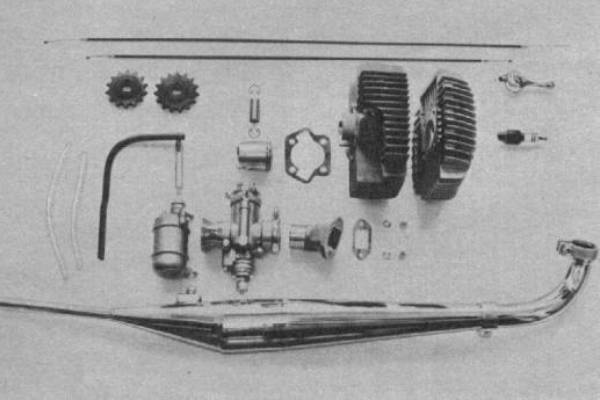 |
During 1968, Kreidler had brought out a tuning kit for the Florett RS engines, consisting of a new cylinder with head, piston, exhaust system, carburettor and some small stuff like inlet stub, sprockets and gaskets. It was the intention that the Van Veen Kreidler engine should be based on this kit. In the end, however, Van Veen changed the engine to rotating disc inlet, manufactured his own cylinder and developed his own exhaust system, while the crankcases and gearbox were still based on the standard Kreidler Florett RS engine, air cooled and with 5-speed gearbox. The engine had Bosch Thyristor (Capacity discharge breakerless) ignition and a Kröber electronic rev. counter. Carburettor was Bing with Amal float chamber. Power was 15.5 bhp at 13,500 - 14,500 rpm. Rear shock absorbers were specially developed by Dutch firm Koni. During the season, the engines were further developed and got water cooling, the cylinders for which were first made by Dutch firm DRM but, after some teething troubles, by the Kreidler works, based on the port timing of the Van Veen cylinders. |

|
 |
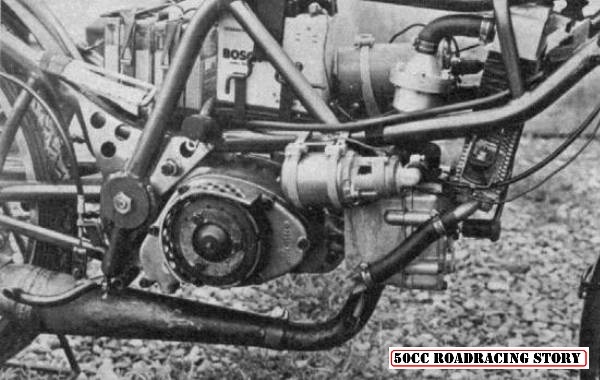 |
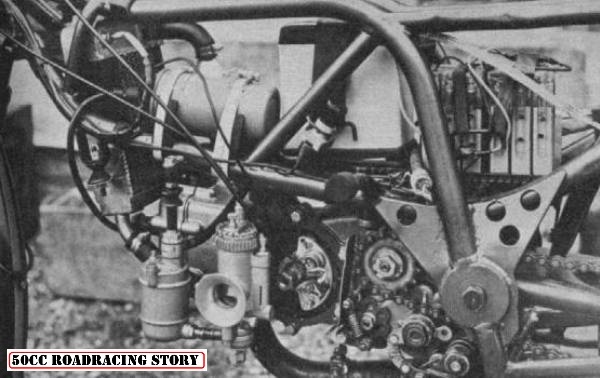 |
| Later Van Veen returned to Dutch cylinders. The Hurth 6-speed gearbox had a dry clutch. Next to and just above the cylinder is the electrically driven Bosch water pump, and above that the thermostat. Behind the battery for the ignition are the two batteries for the waterpump. I don't understand why they used an electrically driven pump - batteries are always a pain in the backside, and, what's more, with them the weight of the bike went up to 62 kg - 7 kg above the minimum weight requirement. Carburation was now by 25 mm Dell'Orto SS carburettor. The ignition worked again with the normal battery, coil and contact breaker set-up; the contact breaker can be seen just behind the carburettor. Reason for this change back was the sensitivity of the originally used thyristor system to engine vibrations. Power output 15.5 - 16 bhp. | |
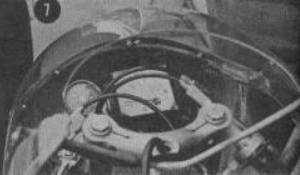
|
DerbiThe Derbis of 1969 had water-cooling for the cylinder, head and the crankcase. Electronic breakerless ignition and Kröber electronic rev. counter. Ceriani forks with Fontana front brake. Six-speed gearbox. Power output 15.5 bhp at 14,500 rpm. |
 |
 |
JamathiThe Jamathi got a completely new engine for the 1969 season - see pics Jamathi8, 9 and 10. Of course the bike had now a 6-speed gearbox. As before, water cooling and rotating inlet. An amazing bike, with a view to the fact that it was still privately built. |
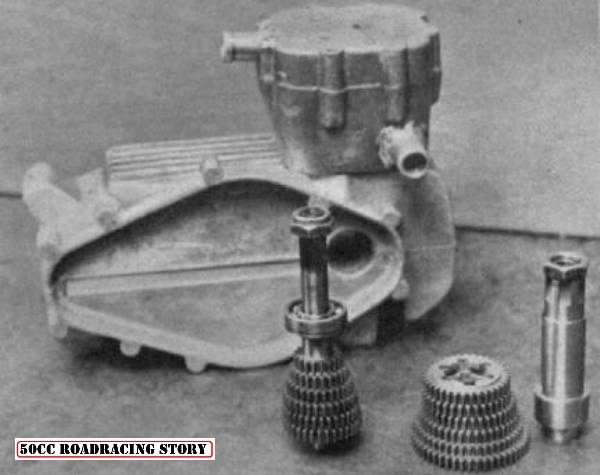 |
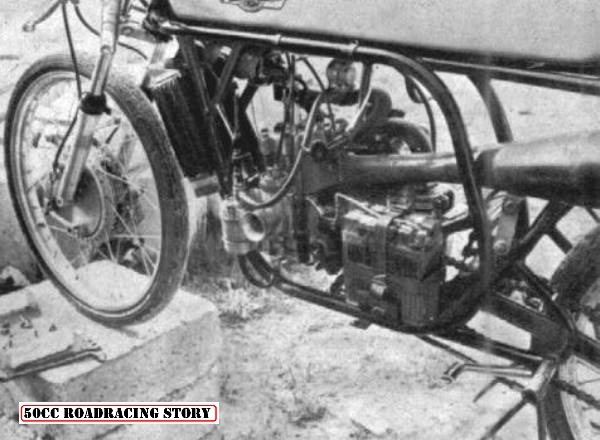 |
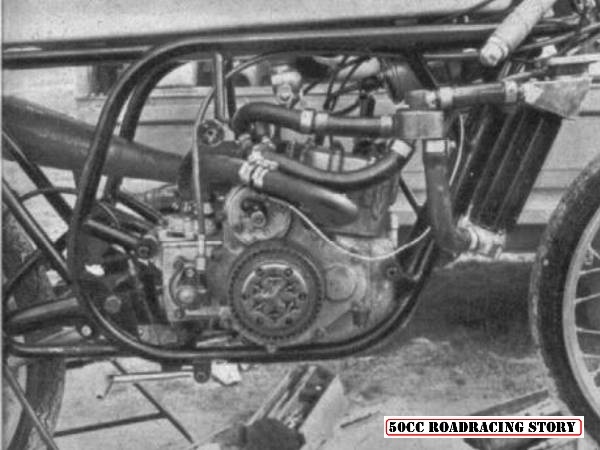 |
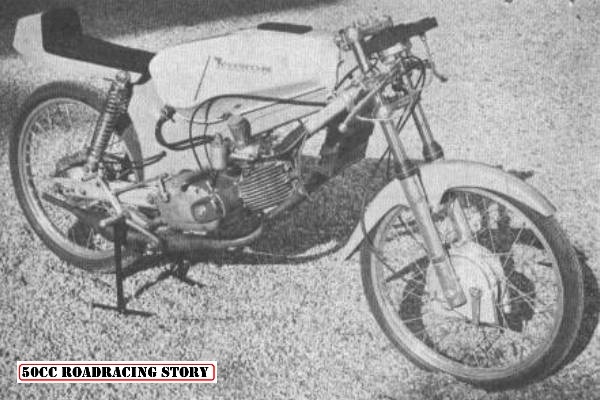 |
TomosThe Tomos was, as before, based on the Puch moped. The engine now had water cooling, (although the cooling fins on the cylinder and head gave it the appearance of an air-cooled engine) but had still the piston controlled inlet, with Dell'Orto SS 23 mm carburettor. Bore and stroke were 38 x 43 mm - very different from their competitors, which were all short-stroke! Ignition with battery and coil. Power output 12 bhp at 12,000 rpm, six speed gearbox. Front forks were Italian Marzocchis, with Italian double-sided, sls front brakes. |
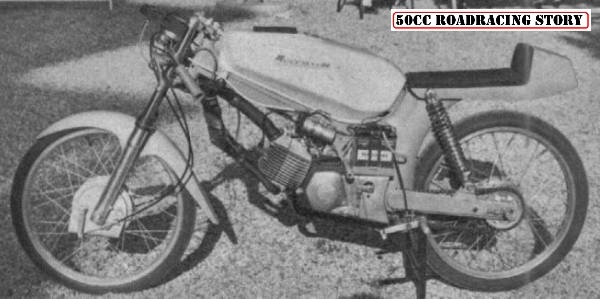 |
 |
| Tomos5 shows the bike while being weighed, after a protest by Derbi - but the bike was not too light. | 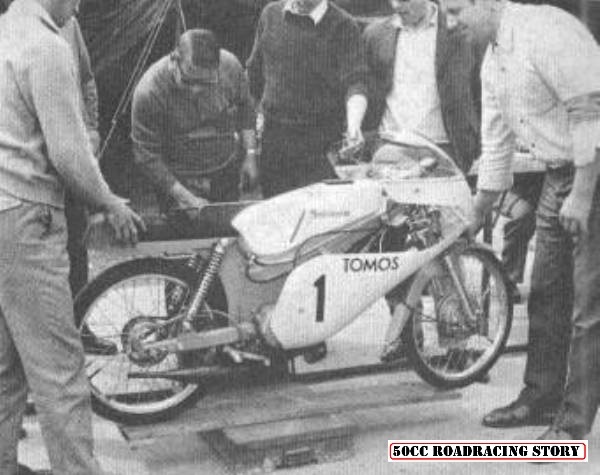 |
GuazzoniThe Guazzoni was a two-stroke with a bore and stroke of 41 x 37.5 mm, air cooled with rotating inlet (see pics. Guazzoni1 and 2). The Dell'Orto carburettor was 24 mm, ignition by flywheel magneto with external HT coil. Power output 12.5 bhp at 13,500 rpm. The bike was normal for sale (price in 1969 450,000 lire, which was approximately DM 2900,- or some ? 300,-), and it was the intention to build a series of 50. It is not known whether this ever happened. |
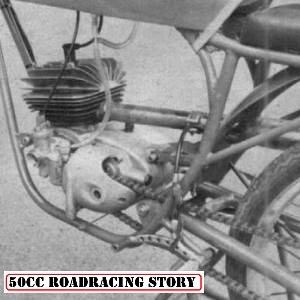  |
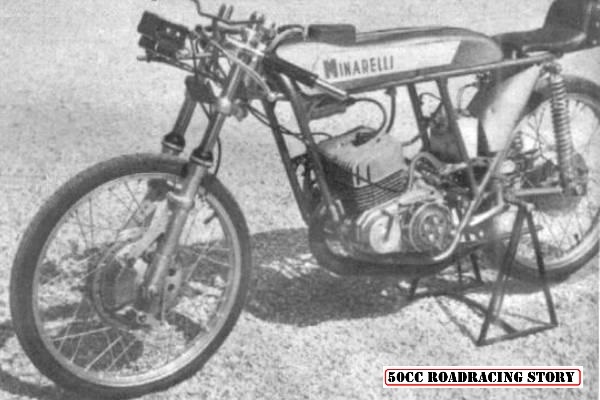 |
MinarelliThe Minarelli engine was an air-cooled two-stroke with rotating inlet, fed by a 25 mm Dell'Orto SS carburettor. Ignition with battery and coil, dry clutch to the 6-speed gearbox. Needle roller bearings were used where possible to reduce internal friction. Front forks Ceriani with 180 mm Fontana double-sided, 2ls front brake. |
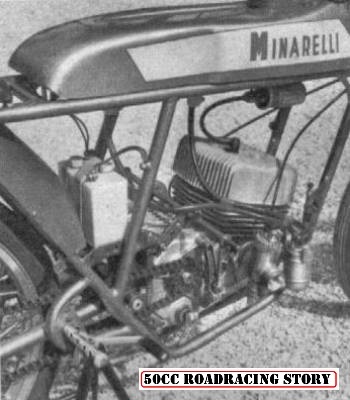 |
|
Puch and KTMApart from the fact that both bikes' engines were based on their moto-cross models, nothing is known about them. | |
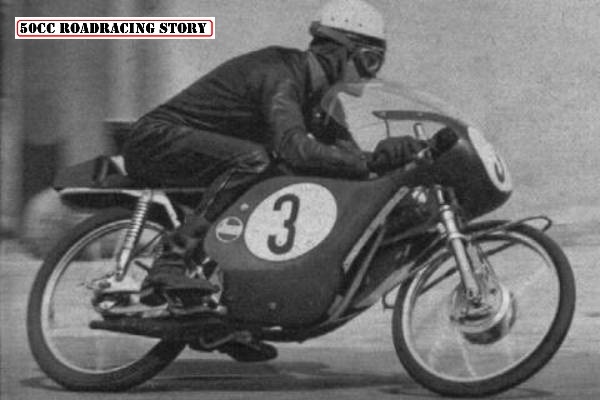 |
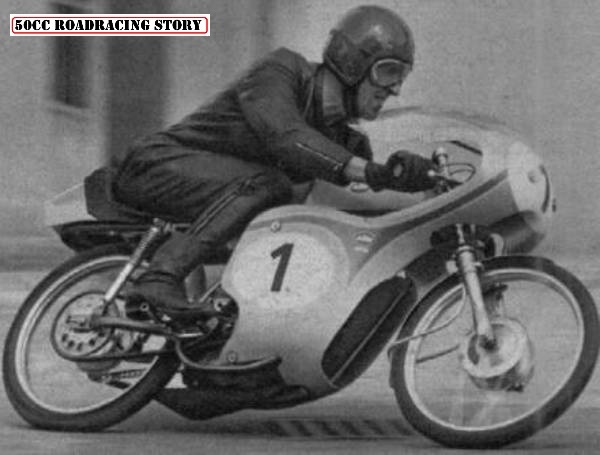 |
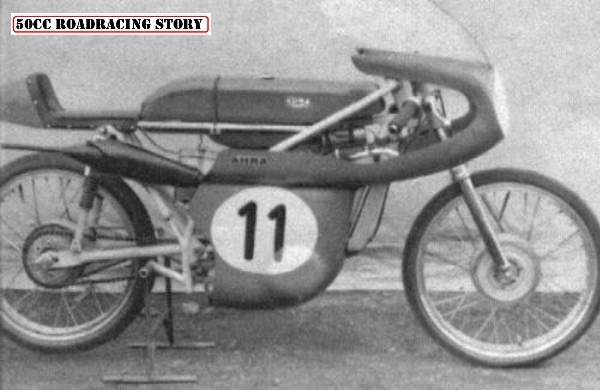 |
AhraThe Ahra production racer had a water-cooled two-stroke engine with a bore and stroke of 42 x 38.8 mm. Rotating inlet, battery and coil ignition. No power output was given, engine speed was max. 15,000 rpm. Dry clutch to the 6-speed gearbox, with gear ratios of 2 -1.75 - 1.30 - 1.12 - 1 - 0.91 : 1. Tyre sizes 2.00-18 front, 2.25-18 rear. |
 |
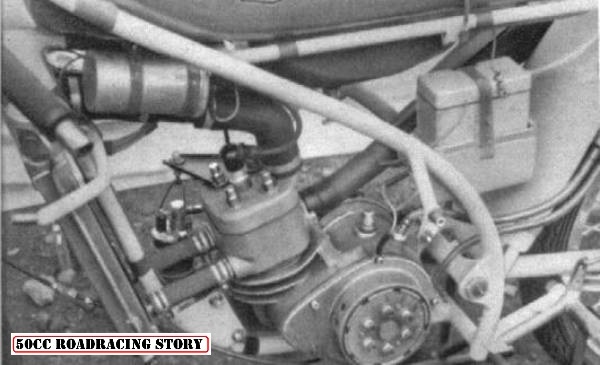 |
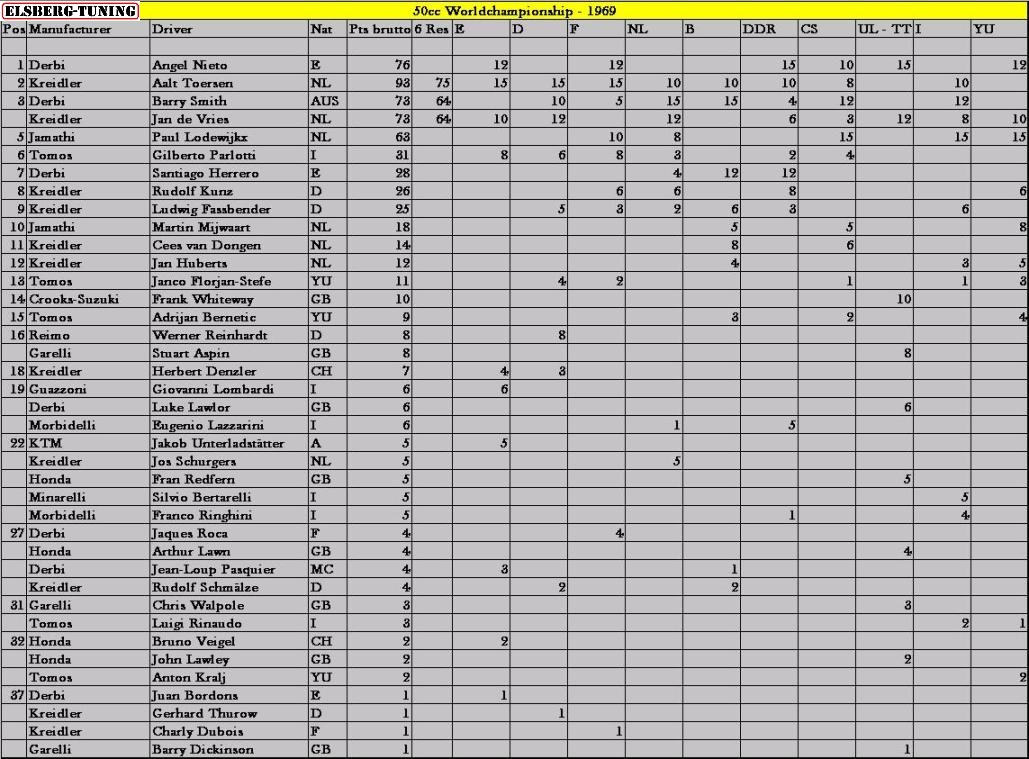 |
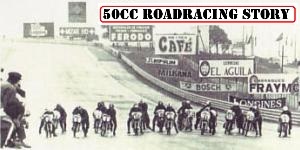  |
 |
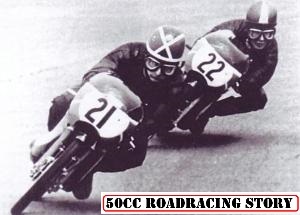  |
Before start of the Belgian GP at Spa Francorchamp |
 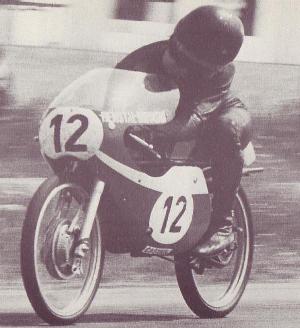 |
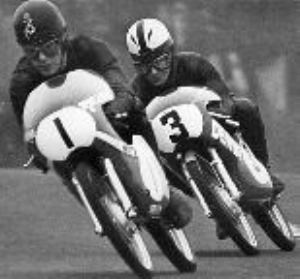 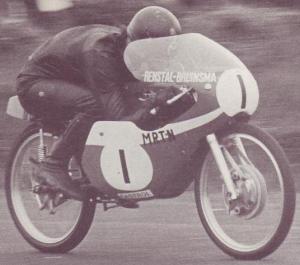 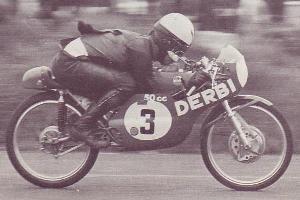 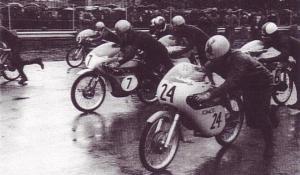 |
 |
 |